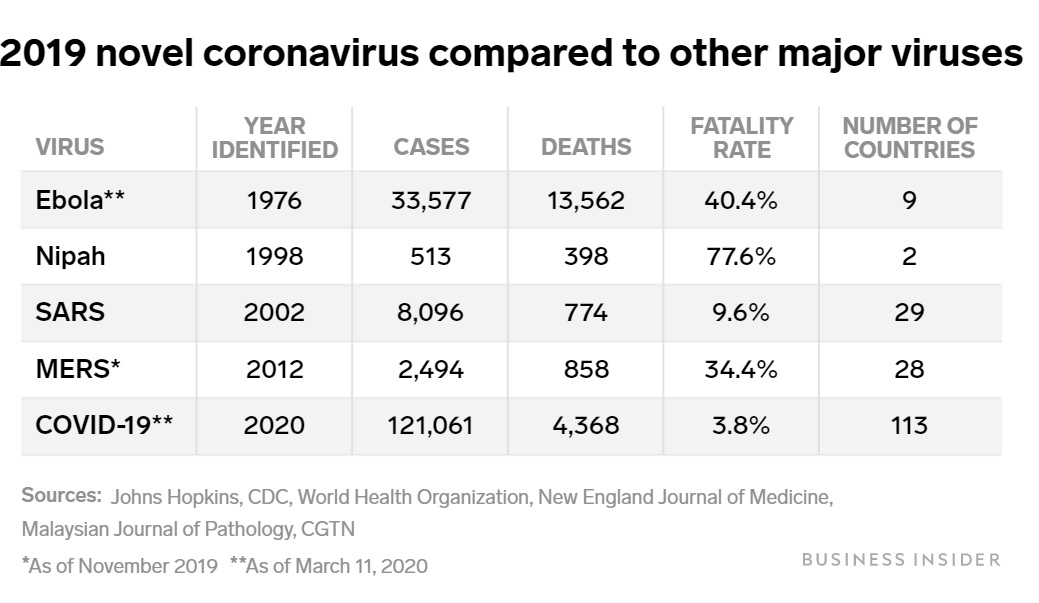Can digital life save us from the fear and anxieties of COVID-19, especially when we are put in quarantine, like the Chinese were, like the Italians are today? The digital economy will undoubtedly get a boost from COVID-19 – just like the 2002-2003 SARS epidemic is credited with boosting e-commerce in China. But it’s likely to be far more complicated than that episode. Let’s examine why the conditions are different.
First, the move to digital life is likely to engulf everybody. Not just celebrities in the sports and entertainment industries or political leaders, both belonging to groups at highest risk to contract the virus, but everyone in the street, climate activists included. In a series of tweets, Greta Thunberg encouraged people to avoid large crowds and protest online, tagging their social media posts #DigitalStrike and #ClimateStrikeOnline.
“We’ll have to find new ways to create public awareness & advocate for change that don’t involve too big crowds,” Thunberg wrote. “Keep your numbers low but your spirits high and let’s take one week at the time.”
We can’t solve a crisis without treating it as a crisis and we must unite behind experts and science.
This of course goes for all crises.Now the experts urge us to avoid big public gatherings for a better chance to #flattenthecurve and slow the spreading of the Coronavirus. 1/4 pic.twitter.com/24o3a7J9ed
— Greta Thunberg (@GretaThunberg) March 11, 2020
In this crisis, she said, “we must unite behind experts and science”: in that sense, COVID-19 is just like climate change. And containment measures (like quarantine) make total sense: They flatten the curve of the epidemic, giving time and space to national hospital systems to gear up and get ready to treat everyone who needs help.
Wednesday 11 March will remain in the annals of History as the day the World Health Organization, with some 120,000 people now confirmed to have contracted the new coronavirus and over 4,000 deaths, officially declares it a pandemic and Trump announced a travel ban on Europe for 30 days, targeting the Schengen Area (26 European nations).
Trump’s Travel Ban: A Hit to International Solidarity and Why that Matters
Trump’s decision, as Bloomberg points out, effectively “puts the U.S. off-limits for a continent of 450 million people”. With no forewarning, Europe joins China, South Korea, and Iran in being subject to U.S. constraints. The ban doesn’t apply to American citizens and does not extend to the U.K. (never part of the Schengen area).
For Trump, COVID-19 is yet another pretext to continue his fight against globalization and the post World War II international order he inherited, pushing Europe that much closer to China.
Speaking during a press conference, WHO’s Director-General Tedros Adhanom Ghebreyesus said: “It doesn’t change what WHO is doing, and it doesn’t change what countries should do,” but he called for a doubling down and “more aggressive” response.
Trump’s response is anything but.
Unsurprisingly, stocks have reacted negatively to Trump’s ban and stocks plunged again the next day, and the S & P 500 looks destined for a bear market.
True, effective containment measures are needed. This means putting affected communities in quarantine – as China did, putting 60 million people in the Hubei province in isolation and as Italy is now doing with its own 60 million people.
But what is also needed is to keep a cool head; not panic like Trump and destroy international cooperation and solidarity. The IMF has moved forward, pointing out that with the sharp tightening in financial conditions, along with expectations of low inflation, central banks’ monetary policies have a role to play at the current juncture. Global cooperation to synchronize monetary policy must be high on the agenda.
Central banks can act to help ease the tightening of financial conditions by injecting liquidity and cutting interest rates, thus preventing a possible credit crunch. In fact, that is precisely what markets have anticipated, with sovereign bond yields falling sharply in many countries around the world. As I write, European Central Bank President Christine Lagarde is scheduled to announce how the ECB will use monetary tools to try to prevent the coronavirus outbreak from sparking a repeat of the 2008 financial crisis.
It is of the utmost importance, from an economic point of view, that supply chains not be disrupted. And if they are, that disruptions be, to the extent possible, temporary and minimal. This is crucial and it’s the first, most important lesson we can draw from the Chinese experience with COVID-19.
China, to this day, was the first country affected with over 80,000 cases, and it was also the first country to start coming out of it after engaging in the biggest pandemic containment measures ever seen in History.
Only to be repeated now by Italy that has put in lockdown an equal number of people: some 60 million – until 3 April (disclosure: I live in Italy). And doing everything that is needed, from massive testing to canceling all public and private gatherings and sports/cultural events, closing down schools and universities, museums, theaters, bars and restaurants, non-essential shops (only food stores and pharmacies remain open – supermarkets closed the weekend), relying on its public health system for paid sick leave, providing home mortgage moratorium, encouraging holiday-taking and remote/smart working, and bringing in retired doctors and medical personnel to help prevent hospitals from being overrun.
My impression? For now, Italians are taking the containment measures to heart. Streets are deserted, shops and bars are closed, everything is on hold. This just doesn’t look like the Italy we know. And everyone here fears that it will spread to Southern Italy whose healthcare system is far weaker. In fact, healthcare systems being swamped is the main fear.
Why Containment Measures are Needed in the Early Phase of the Outbreak
Quarantine is needed because COVID-19 is much more contagious than the seasonal flu: Transmission rate is twice as high. Anyone infected transmits it to 2.2 persons as compared to 1.3 for the seasonal flu. The number of cases reportedly doubles about every six days and 5 to 10 percent need to be hospitalized.
Also, the flu typically kills about 0.1 percent infected while COVID-19 probably kills around 1 percent when proper care is available — but much more than that when hospitals are overwhelmed and ventilators are not available. With the result that people die unnecessarily of COVID-19, in particular older people and persons with previous serious medical conditions. The rate for them is close to 50 percent.
Will Italy also succeed in turning around the COVID-19 threat and initiate a quick economic recovery? Everything depends on two factors:
(1) How effective the Italian lockdown will actually be; can people in a free democracy (unlike China) expect to cooperate and obediently stay in quarantine for the needed three weeks (up to 3 April)?; and
(2) To what extent will both domestic and international supply chains that feed into the Italian economy be disrupted?
Why Containment Measures are Likely to be Effective
First, we need to be ready for the long haul. The coronavirus is likely to spread for months if not more than a year before a vaccine could become widely available. It is accepted wisdom that since COVID-19 is somewhat similar to SARS, the same containment measures are expected to work.
An interesting article in the Lancet makes a more nuanced point, noting that the epidemic trajectory between SARS and COVID-19 actually looks different. The SARS epidemic was brought under control in a matter of 8 months and it was essentially concentrated in only five countries or regions: China, Taiwan, Hong Kong, Singapore, and Toronto, Canada. By interrupting all human-to-human transmission, containment measures worked and SARS was effectively eradicated.
By contrast, COVID-19, by Feb 28, 2020, within a matter of 2 months since the beginning of the outbreak and in spite of containment measures, had ten times the number of confirmed cases and more than five times as many deaths – making it the most widespread pandemic to date (if not as lethal as the others, in particular, Ebola):
In the face of a continuing expansion of the outbreak, China responded with the largest quarantine ever, extending the lockdown to more than 60 million residents in more than 20 cities by Jan 30, 2020. And, as we all know, it apparently finally began to work.
As the Lancet put it: “The daily decline in new cases by mid-February suggests that China is on the right path, showing that containment could be feasible […] Minimizing the size of the outbreak or suppressing its peak can reduce global deaths by providing health systems with the opportunity to scale up and respond, and slow down the global spread until effective vaccines become available.”
Lesson learned from the Chinese experience: Quarantine is likely to work but it will require very stringent measures over a very large population. Italian authorities took note and this is why they were so quick to extend the lockdown that first concerned only Northern Italy to the rest of the country and to leave it in place for three weeks.
The Outlook for Economic Recovery: The Case of Italy vs. China
How fast will Italy recover from the economic disruption caused by COVID-19?
In this respect, China has a clear advantage over Italy. Hubei province is part of China, it is embedded in the national economy.
A just-published article in the Harvard Business Review (10 March 2020) documents how Chinese companies responded to the outbreak. Clearly, large companies covering the whole nation played a lead role in this recovery.
While stock prices fell at first and the bulk of the hardest-hit sectors such as transportation, retail, and energy, representing 28% of market capitalization for China’s largest stocks — are still down today by at least 5% and showing only minimal signs of recovery, leading sectors, such as software and services, and healthcare equipment and services, recovered within a few days of the outbreak and have since increased by an average of 12%.
Demand increased in many specific areas. These include B2C e-commerce (especially door-to-door models), B2B e-commerce, remote meeting services, social media, hygiene products, health insurance, and other product groups.
Another boost came from state contracts, as noted by Tech Crunch: “Private firms in China have teamed up with regional authorities to better track people’s movements, ramp up facial recognition capacities aimed at a mask-wearing public, develop contact-free consumer experience, among other measures.”
Italy, as a free democracy, is in a very different position. State contracts do exist, but they are likely to be smaller, occurring only in its public health and education systems, and certainly not on the Chinese scale.
Also, it’s economy is largely based on small and medium enterprises – only a few giants cover the whole territory.
Finally, Italy is embedded in the European Union. This could make a big difference in the rate of economic recovery from the coronavirus outbreak for Italy. Even with the Schengen Area and the European institutions in Brussels, including the European Center for Disease Prevention and Control (ECDC) (based in Sweden), it’s not the same as being part of a national economy.
The European political leadership is fragmented and slow, Shengen rules can be broken in the case of an emergency. And that is exactly what Austria and Slovenia have done this week, closing their borders to Italy.
But the lesson is dire: If Italy is going to be slow to recover because of broken supply chains – so will the rest of Europe, with soaring numbers of infected people everywhere across the continent.
A globalized world that transmits viruses easily also needs to be globalized in its response.
A virus knows no barriers, Trump’s travel bans notwithstanding.
Towards a More Digital World: The Example of China
The only light at the end of the tunnel: If the pandemic is going to last long – up to one year or more – and be so extensive as to cover the whole planet, it is very likely that the shift to a more digital life will endure. Some changes are even likely to become permanent.
So far, the coronavirus has boosted digital life, and this is nowhere more evident than in China, the epicenter of the pandemic. As noted in the HBR article, China appears to be in “the early stages of an economic rebound”. Even coal consumption appears to be recovering from a trough of 43% to currently 75% of 2019 levels, indicating that some production is resuming. And confidence appears to be coming back as seen in real estate transactions, which had fallen to 1% of 2019 levels but have since bounced back to 47%.
Several strategies followed by Chinese companies seemed to have worked, including:
- Lending out unused personnel to e-commerce companies: For example, more than 40 restaurants, hotels, and cinema chains freed up a large share of their workforces and then shared them with Hema, a “new retail” supermarket chain owned by Alibaba, which needed to expand its delivery services in response to the sudden increase in online purchases; O2O players, including Ele, Meituan, and JD’s 7Fresh followed suit, borrowing labor from restaurants;
- Redirecting personnel to new online activities: The cosmetics company Lin Qingxuan, forced to close 40% of its stores during the crisis, including all of its locations in Wuhan redeployed its 100+ beauty advisors from those stores to become online influencers through WeChat, to engage customers virtually and drive online sales;
- Using social media to coordinate employees and partners: Many Chinese companies took to social media platforms, such as WeChat, to coordinate employees and partners – the case of Cosmo Lady, the largest underwear and lingerie company in China, enlisting employees to promote to their social circles;
- Catching new online opportunities: For example, Kuaishou, a social video platform valued at $28 billion, promoted online education offerings to compensate for school and university closures, in cooperation with the Ministry of Education to open a national online cloud classroom to serve students; likewise, a major restaurant chain leveraged down-time to plan a new offering of semi-finished dishes, capturing the increased need and occasion for home cooking during the crisis;
- Expanding the offer to capture new customers: For example, in response to the crisis, an insurance company, Ant Financial added free coronavirus-related coverage to its products; it now reportedly expects a 30% increase in health insurance income in February, as compared to the previous month.
Will such new habits stick? It is too early to say but a leap from offline to online education, a transformation in health care delivery, and an increase in B2B digital channels are very likely.
E-commerce will obviously benefit and social media too. Youtube and Facebook have already become a preferred channel for politicians and activists – more than Twitter because of its greater versatility. Youtube has always been great for movie trailers. But they are likely to become the place to go to for entertainers and singers to launch their albums and writers to launch their books – in lieu of physical events. And it has already started to happen in Italy.
Hello, digital world, your future looks bright.











